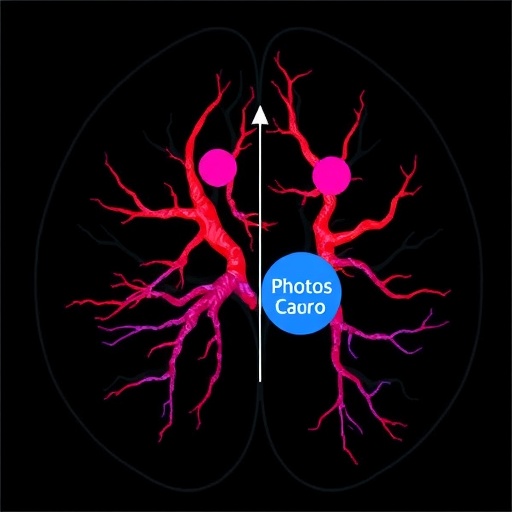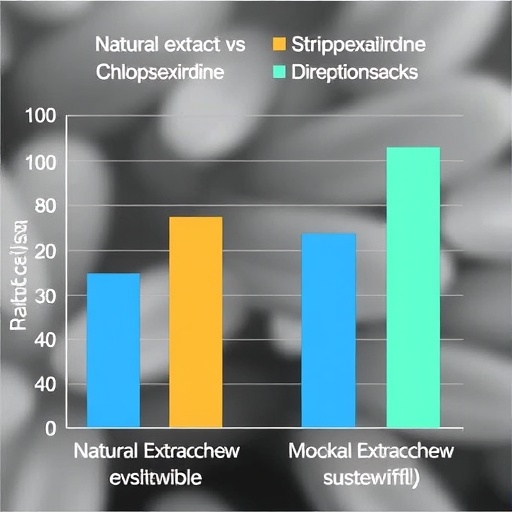A recently published case report in the October 2025 issue of Oncoscience unveils the diagnostic complexities and clinical challenges posed by epithelioid hemangioendothelioma (EHE), a rare vascular tumor that can easily masquerade as a benign post-traumatic hematoma. This vascular neoplasm, known for its unpredictable biological behavior, highlights the crucial necessity for heightened clinical suspicion and thorough pathological evaluation when dealing with persistent or atypical subcutaneous swellings.
The case study, authored by Reshmi Sultana, Tushar M. Parmeshwar, Nynasindhu Akula, and Abhimanyu Sharma from the All India Institute of Medical Sciences, Bibinagar, documents a 48-year-old woman presenting with a painless leg swelling initially interpreted as a blood-filled cystic lesion on imaging studies. Conventional ultrasound and MRI failed to distinguish the lesion from a typical hematoma, underscoring the challenge of differentiating vascular tumors from benign entities through radiological means alone. Needle biopsy was equally inconclusive, revealing only erythrocytes, thus delaying a definitive diagnosis.
Microscopic evaluation following surgical excision was pivotal in establishing the diagnosis. Histopathological analysis revealed a vasoformative neoplasm infiltrating the surrounding adipose tissue within a myxoid stromal background. At higher magnification, the tumor comprised spindle and epithelioid cells exhibiting hallmark intracytoplasmic lumina containing erythrocytes, a defining feature that differentiates EHE from other vascular lesions. The presence of polygonal endothelial cells with intracytoplasmic vacuoles confirmed the tumor’s vascular origin.
Immunohistochemical studies revealed positivity for CD31 and CD34 markers, which are endothelial lineage-specific proteins, cementing the tumor’s vascular endothelial identity. These findings reiterate the indispensable role of immunohistochemistry in diagnosing vascular neoplasms, particularly those with ambiguous histological presentations. The combined use of histology and immunophenotyping serves as the diagnostic gold standard for rare tumors such as EHE.
EHE arises from endothelial cells lining blood vessels and is characterized by borderline malignancy. It occupies an intermediate position in the spectrum of vascular tumors, displaying behavior more aggressive than benign hemangiomas, yet notably less malignant than high-grade angiosarcomas. This biological ambiguity often leads to diagnostic dilemmas and management uncertainties. Its slow-growing nature and subtle clinical presentation mean EHE is frequently misdiagnosed or overlooked, causing potential delays in treatment.
The clinical presentation of EHE is frequently innocuous, as in this case, where the patient experienced no pain or preceding trauma. Radiologically, EHE mimics benign vascular anomalies, complicating early detection. Moreover, tissue sampling via fine-needle aspiration often yields non-representative material due to tumor heterogeneity and intravascular blood contamination, as was evident here where only red blood cells were aspirated. This highlights the limited sensitivity of less invasive diagnostic procedures in ruling out malignancy in such contexts.
Given the tumor’s capacity for local infiltration and possible metastatic spread, complete surgical excision with clear margins remains the cornerstone of treatment. The subject of this report successfully underwent surgical removal with no perioperative complications. Encouragingly, follow-up imaging and clinical evaluations over time demonstrated no evidence of tumor recurrence or distant metastasis, underscoring the curative potential of early and comprehensive resection.
The unpredictable clinical course of EHE necessitates vigilant long-term surveillance. Despite appearing indolent in many cases, this neoplasm can display aggressive behavior, including late recurrences and metastases affecting the lungs, liver, and bones. This case, therefore, advocates for a multidisciplinary approach encompassing surgical, pathological, and oncological expertise to optimize patient outcomes and tailor postoperative monitoring protocols.
This report accentuates the importance of awareness among clinicians and pathologists regarding rare vascular tumors presenting as benign-appearing subcutaneous masses. It serves as a critical reminder to subject persistent or atypical swellings to exhaustive diagnostic exploration, integrating detailed histopathological and immunohistochemical assessment. Such diligence is essential in preventing misdiagnosis, ensuring timely therapeutic intervention, and improving prognostic trajectories.
The case exemplifies the diagnostic pitfalls inherent in imaging and needle biopsy evaluations of vascular lesions, illustrating the indispensable role of excisional biopsy for definitive diagnosis. It also stresses the need for ongoing research into molecular and genetic markers that could refine differential diagnosis and stratify risks in EHE and related vascular tumors. Advancements in these domains could pave the way for novel targeted therapies.
In essence, epithelioid hemangioendothelioma represents a formidable diagnostic and therapeutic challenge owing to its rarity, histological variability, and clinical unpredictability. This newly reported case reinforces a vigilant clinical mindset and comprehensive investigative methodology when confronted with vascular-like subcutaneous lesions, preventing potentially life-threatening diagnostic oversights.
Subject of Research: People
Article Title: Epithelioid hemangioendothelioma: A rare mimicker of post-traumatic hematoma
News Publication Date: October 16, 2025
Web References:
Oncoscience Journal
DOI Link
Image Credits: Copyright: © 2025 Sultana et al. Distributed under the Creative Commons Attribution License (CC BY 4.0).
Keywords: cancer, epithelioid hemangioendothelioma, hematoma, vascular neoplasm, subcutaneous swelling, immunohistochemistry
Tags: case report on EHE symptomsclinical challenges in tumor identificationdistinguishing benign from malignant lesionsEpithelioid hemangioendotheliomahistopathological analysis of EHEimaging studies in vascular tumorsmisdiagnosis of hematomaneedle biopsy limitationspersistent subcutaneous swellingsrare vascular tumor diagnosissurgical excision in tumor diagnosisvascular neoplasm pathology





